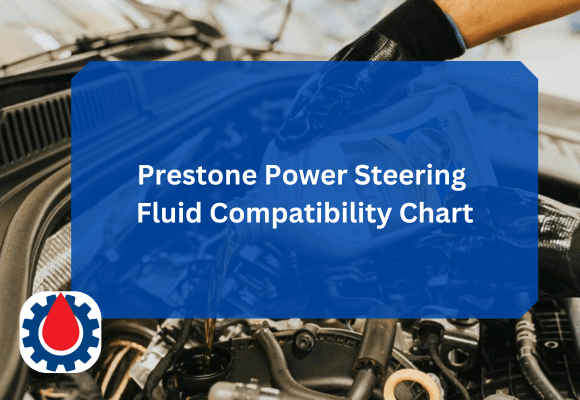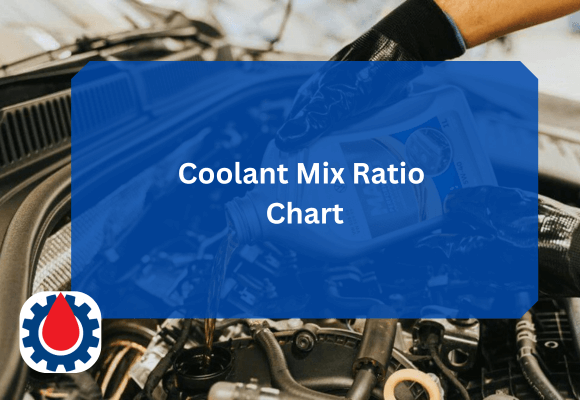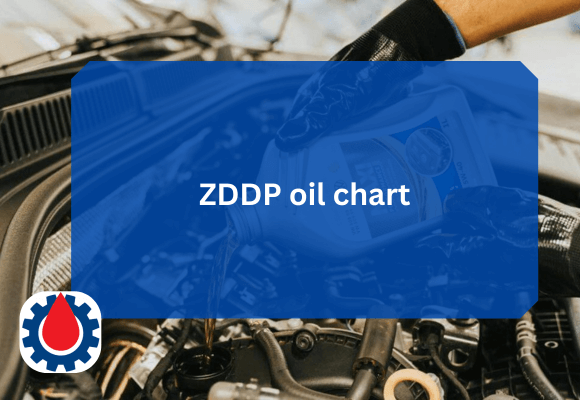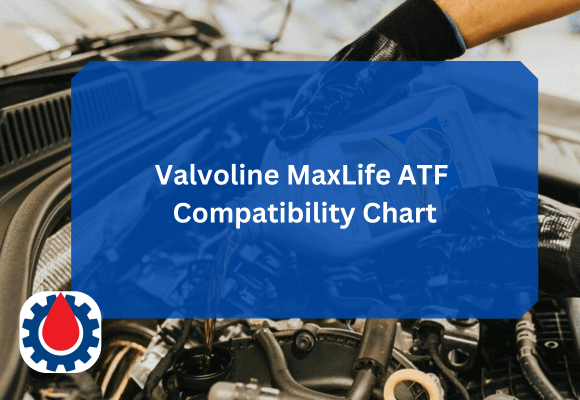Prestone is one of the leading brands in vehicle fluids, and its power steering fluid line covers a range of vehicle types, from American to European and Asian models.
This guide provides a detailed compatibility chart and key information to help you choose the right Prestone Power Steering Fluid for your vehicle.
Prestone Power Steering Fluid Compatibility Chart
| Prestone Product / Part Number | Intended Vehicle Type / Region | Key Compatibility | OEM or Equivalent Specifications | Cautions |
|---|---|---|---|---|
| Prestone Standard PSF (AS261Y) | All vehicles / general use | Conventional mineral-based PSF, suitable for older systems | Compatible with many OEM fluid requirements | Avoid mixing with synthetic CHF-type fluids; not for high-performance systems |
| Prestone Synthetic PSF (AS260Y, AS266Y) | All vehicle types | Synthetic blend, long life, enhanced anti-wear protection | Works with most modern steering systems | Confirm compatibility for specialty European CHF systems; avoid mixing with mineral-based fluids |
| Prestone MAX American + Stop Leak (AS277) | American vehicles with minor leaks | Full synthetic, contains seal conditioners, 2X anti-wear | Compatible with Dexron II/III, Mopar PSF, Ford Type F | Not a fix for large or mechanical leaks; not for CHF systems |
| Prestone European Vehicles PSF (AS268) | European brands (BMW, Mercedes, VW, Audi, Volvo, Porsche, Mini) | Full synthetic, equivalent to CHF 7.1, CHF 11S, CHF 202, Pentosin specs | Meets OEM requirements for European cars | Do not mix with non-CHF or universal fluids; green color fluid |
| Prestone Asian Vehicles PSF (AS269) | Asian brands (Honda, Toyota, Lexus, Nissan, Hyundai, Kia, Subaru) | Synthetic blend, formulated for Japanese/Korean systems | Matches Honda PSF, Toyota Type IV, Dexron II/III | Use exact formula for best seal life; not for CHF systems |
| Prestone PSF + Stop Leak (AS263Y) | All vehicles with minor leaks | Mineral-based with seal conditioners, corrosion inhibitors | Compatible with standard and synthetic Prestone PSFs | Temporary leak control only; not for severe leaks or CHF systems |
| Prestone Universal PSF (Pour & Go) | General / universal applications | Broad compatibility, mineral-based, easy application | May replace factory fluids in most passenger vehicles | Check manufacturer specs; not suitable for CHF or specialty systems |
| Prestone MAX Full Synthetic European PSF | European brands (BMW, Mercedes, VW, Audi, Volvo, Porsche, Mini) | Full synthetic, 100,000-mile life, 2X anti-wear protection | Meets CHF 11S, CHF 202, Pentosin CHF specs | Do not mix with non-CHF fluids; green color; confirm vehicle-specific requirements |
| Prestone MAX Asian + Stop Leak (AS278) | Asian vehicles with minor leaks | Synthetic blend, seal conditioners, anti-wear additives | Compatible with Honda PSF, Toyota Type IV, Dexron II/III | Not for CHF systems; temporary leak fix only; avoid overuse |
| Prestone High Mileage PSF (AS270) | Vehicles with >75,000 miles | Synthetic blend, conditions seals, reduces pump noise | Compatible with most OEM fluids for high-mileage vehicles | Not for CHF systems; confirm compatibility with European/Asian specs |
| Prestone Synthetic Cold Weather PSF (AS265) | All vehicles in extreme cold climates | Synthetic blend, low-temperature fluidity, anti-wear | Compatible with most standard and synthetic PSFs | Avoid use in CHF systems; not a substitute for vehicle-specific fluids |
Related ATF Oil Suitable for Power Steering(Top 4 Best ATF Picks)
Choosing Right Prestone Power Steering Fluid
1. Check the Manufacturer’s Recommendation
The best starting point is your vehicle owner’s manual. The manufacturer specifies which type of power steering fluid should be used, whether it’s a standard PSF, ATF-based fluid, or synthetic CHF formulation. Using a fluid not approved for your system could cause swelling, leakage, or pump noise.
2. Understand the Type of Fluid Required
Some vehicles use Automatic Transmission Fluid (ATF) as the steering fluid. Others require specific PSF formulations. European systems often need CHF-spec fluids, while Asian and American models can differ widely. Prestone makes region-specific products for these variations.
Related ATF Viscosity Chart(For ALL Types)
3. Synthetic vs Conventional
Prestone’s synthetic PSFs last longer, resist oxidation, and perform better under high temperatures. Conventional fluids, while cheaper, may break down faster and require more frequent replacement. Synthetic is generally the better choice for modern vehicles.
Mixing Prestone Fluids
Mixing different Prestone fluids is usually safe if they are within the same chemical base (for example, conventional with synthetic). However, it’s not recommended to mix CHF-type European fluids with regular or universal PSFs. This can reduce the fluid’s ability to maintain pressure, leading to noise or steering stiffness.
When topping up, it’s best to use the same type already in your reservoir. If you are unsure what was used previously, consider performing a full flush and refill with the correct Prestone product.
Related Valvoline MaxLife ATF Compatibility Chart(For All Vehicle Brands)
About Stop Leak Formulas
Prestone’s Stop Leak versions are popular for older vehicles or systems with small leaks. These fluids contain additives that help condition seals and slow fluid loss. While effective for minor issues, they should not be considered a long-term solution. If a major leak persists, the affected seals or hoses will need replacement.
Why European Vehicles Need Specialized Fluid
Many European automakers use central hydraulic fluid (CHF) systems, which have different viscosities and chemical properties compared to standard PSFs.
Prestone’s European Vehicles PSF is specially designed to meet these standards, equivalent to OEM specifications like CHF 7.1, CHF 202, and CHF 11S. Using the wrong type in these systems can cause foaming, noise, or even pump failure.
Related 62TE Fluid Level Chart(Complete Guide + Best Atf for 62TE)
Flushing and Maintenance Tips
- Flush regularly: Over time, PSF collects debris and loses lubricating properties. Flushing every 50,000 miles helps maintain performance.
- Bleed air after refill: Air in the system can cause whining or hard steering. After refilling, turn the wheel fully left and right several times with the engine running to remove trapped air.
- Inspect for leaks: Check hoses and fittings regularly. Leaks can lead to low fluid levels, causing steering failure or pump damage.
- Use the right funnel and bottle: Avoid contamination by using clean tools and containers.
Final words
Prestone Power Steering Fluids cover a wide range of vehicles, from domestic trucks to European luxury cars. The compatibility chart above shows which formulation best fits each region and vehicle type.
To maintain steering performance, always follow your manufacturer’s recommendations, avoid unnecessary mixing, and service your system regularly. Whether you drive an American sedan, a German sports car, or a Japanese SUV, there’s a Prestone fluid designed to keep your steering system operating smoothly and reliably.




